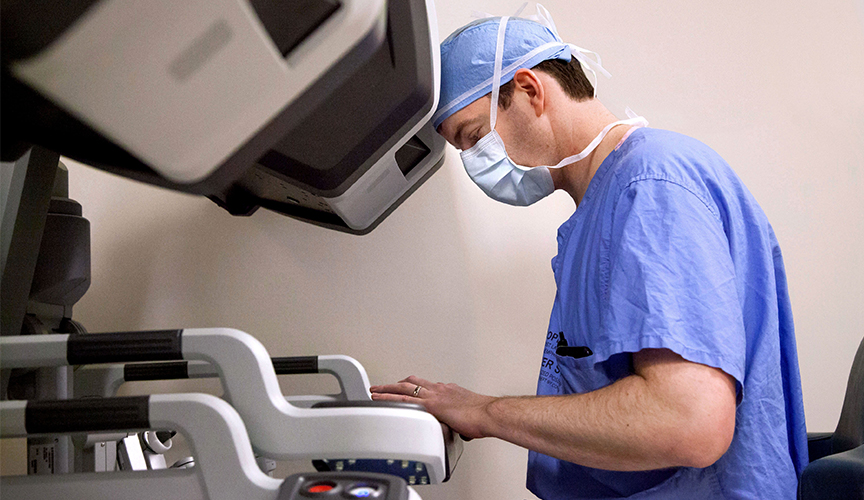A Unique Approach
Surgeons at Le Bonheur Children’s recently performed the first known pediatric transoral robotic approach to the cervical spine. The surgery team used the newest generation robot to remove a bony tumor from the C1 vertebrae of a 14-year-old female patient.
“This is a unique approach for pediatric spine surgery,” said Le Bonheur Surgeon in Chief Trey Eubanks, MD, a pediatric surgeon. “While this method is currently used to remove lesions in adults, as far as we know this approach has never been used in a child.”
The surgical team included Otolaryngologist and Robotic Surgeon John P. Gleysteen, MD; Neurosurgeon L. Madison Michael, MD; and Otolaryngologist and Rhinologist Sanjeet Rangarajan, MD, M. Eng.
Use of the robot and transoral approach had multiple benefits for the surgeons and the patient. Without use of the robot, surgeons would need to split the palate to create the space to remove the lesion. Avoiding opening these critical tissues significantly reduces recovery time, risk of wound problems post-surgery and need for narcotic pain medicine. The patient is left with no visible incision or scarring as a result of the transoral approach.

The robot also gave the surgeons specific advantages: detailed, three-dimensional view of tissues as well as the ability to perform fine movements in a miniscule workspace.
“This gives us another tool with which to approach difficult cases when the surgical plan would be more difficult or require a longer hospital stay,” said Eubanks. “Our technology is only as good as our faculty who are skilled at these types of approaches.”
The surgery began with a robot set up by Gleysteen and Rangarajan, who prepared the patient for surgery and made the initial incisions. They dissected the tissue until reaching the spine. Once the instruments reached the spine, Michael worked to remove the patient’s vertebrae lesion. Rangarajan closed the
tissues and finished the surgery.
Le Bonheur uses robot technology for surgical treatment of other conditions, including performing robotic sleeve gastrectomy as part of Le Bonheur’s Adolescent Bariatric Surgery program. The pediatric urologists also utilize robotic surgery to treat congenital abnormalities of the genitourinary tract, including ureteropelvic junction obstruction and vesicoureteral reflux in addition to performing nephrectomies.
Use of robotic surgery across pediatric specialties allows for better outcomes, a faster recovery time and more precise procedures for surgeons.
Help us provide the best care for kids.
Le Bonheur Children's Hospital depends on the generosity of friends like you to help us serve 250,000 children each year, regardless of their family’s ability to pay. Every gift helps us improve the lives of children.
Donate Now















